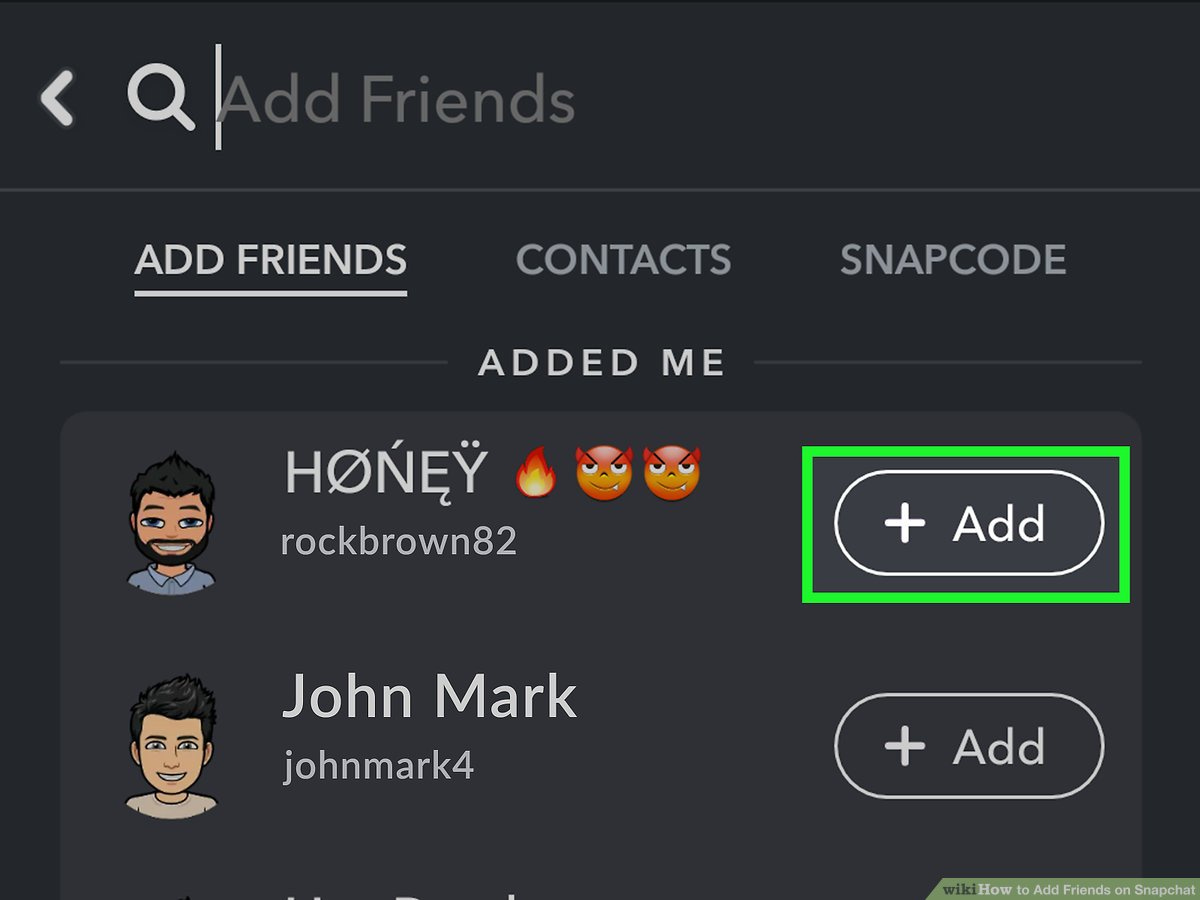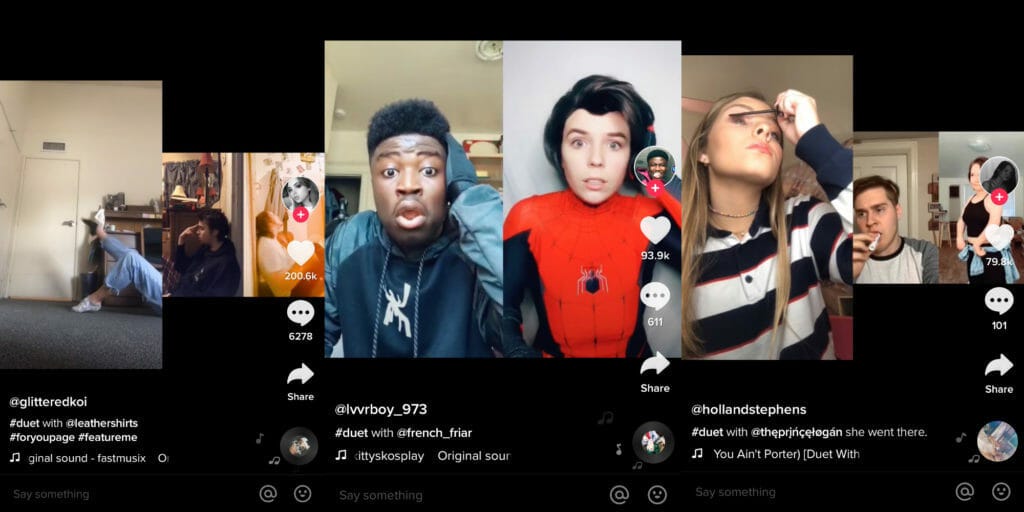Snapchat & TikTok's Unique Marketing Potential
How Augmented Reality and Viral Campaigns are Innovating Advertising
Snapchat and TikTok are two platforms growing at lightning speed in the social media space. TikTok was the #1 downloaded app of 2020, and Snapchat crushed earnings expectations this quarter and clocked in 249 million daily active users, an 18% increase YoY.
These two platforms share a common audience: the younger demographic. Snapchat’s audience is slightly older than TikTok’s, with 78% of Snapchat users aged 18-24 while only 41% of TikTokers are. TikTok, on the other hand, remains more popular among the very young demographic: 27% of users are 13-17 years old.
While Snapchat and TikTok share booming growth and young audiences, the function and purpose of each platform vary. As such, these differences allow marketers to use TikTok and Snapchat in different ways in order to optimize the reach and the effectiveness of their ads.
In the following, I will be breaking down what exactly draws users to each platform, how that draw is enhanced by each app’s content creation and augmented reality tools, and how marketers can capitalize on these tools in the context of each app’s purpose to advertise brands in a fresh and unique way.
1) Social Interaction Vs. Entertainment
The key way Snapchat and TikTok differ as platforms is in their focus on either entertainment or social interaction.
People use Snapchat for social interaction, mainly by communicating directly with friends through photos and direct messages. While Snap also offers call and voice memo functions, those two are less used. In order to share content with your entire social circle on the app, users post to the “story” page where posts disappear after 24 hours. In a bit, we will take a look at what exactly makes Snapchat different (and so attractive) when it comes to staying in touch with friends.
It is worth mentioning that Snapchat is an incredibly private, or rather “non-public” platform. Snapchat photos, direct chats, and stories are only visible to those who you add and have added you back—unless you’re a celebrity and thus your public story can be “subscribed” to. This level of privacy is unique to Snapchat when compared to the other big social media companies: Instagram, Facebook, Twitter, TikTok. You have to search someone’s exact username or have mutual friends to not only add them as a friend but to even see that they have an account at all.

TikTok, on the other hand, is much less about social interaction and giving status updates as it is about entertainment: it’s a platform for watching and creating short videos with dances or skits set to music. In many ways, TikTok is more comparable to Youtube than to Twitter or Snapchat, but it has a specific tilt towards music. The app became so intertwined with the music space in the past couple of years that the Billboard charts now look like a compilation of the hottest TikTok songs.
The Chinese run platform is primarily driven by user-generated content that appears on a “For You” page, a feed that features videos TikTok thinks you will enjoy based on their complex and scarily accurate algorithm that takes into account a host of different tendencies based on your engagement history.
There is one idea central to the wild success of TikTok: the idea that anyone can go viral. If you make a TikTok on a public account, it will be shown to at least 100 people on their For You pages. If the sample group interacts with it—liking, sharing, or viewing till the end—then the For You page algorithm shows it to more and more users, and the cycle continues until you have a video like this:

This skateboard-riding, cranberry juice-drinking, Fleetwood Mac-listening TikToker by the username @doggface208 “blew up” on the app, simply because enough people liked his video to cause exponential growth. The video was so popular that it single-handedly sent Fleetwood Mac’s “Dreams” to the top 10 on the Billboard charts. But more on @doggface208 later. The idea that anybody can achieve viral TikTok fame is appealing and exciting to young users, and it drives a lot of the content creation on the app.
While Snap and TikTok’s primary focuses are on social connection and entertainment, respectively, there are certainly elements of the two apps worth mentioning that operate in the other space. For example, TikTok’s social aspects come in the form of the “following” page, where you can see the videos your friends posted on their own accounts. The “direct messages” feature is another space where you can send funny or entertaining TikToks to friends and comment on them.
Snapchat also deals in the entertainment and content consumption space, but it is less central to the app’s experience. Snapchat’s entertainment comes by way of its “discover page” which features professionally produced content like news programs, reality tv shows, gossip blogs, sports clips, and more. Companies like NFL, UFC, the Washington Post, Saturday Night Live, and others have official content regularly updated on the discover page. The key distinction here is that the entertainment is not user-generated, as opposed to TikTok.
2) A Common Factor: Content Creation and AR
Snapchat and TikTok’s seamlessly integrated content creation and augmented reality (AR) tools are a crucial component of their success. However, the companies use these similar means to achieve different ends. Snapchat’s tools enhance social interaction by making communication creative and engaging while TikTok’s editing tools enhance entertainment by democratizing high-quality video and sound editing capabilities.
Let’s first take a look at Snapchat’s content creation and AR offerings.
Snapchat offers users access to fun face filters that can change your eye color, put dog ears on you, give you a babyface, and more. Snap has been steadily expanding its augmented reality capabilities for the past few years to the point where now over 170 million Snapchat users engage with AR daily. A recently debuted filter that turned you into an anime character was a smashing success, with 3 billion uses in its first week.

One of the reasons Snapchat is so successful as an app based on communication and status updates is because the main medium of communication is images—not only conventional photos but augmented photos. In my opinion, they represent the next step in the evolution of online communication. Originally there was only text, then came emojis, and now selfies with augmented reality filters paired with text and emojis make communication captivating and creative.

Snapchat is currently on the frontier of AR innovation. Newly announced AR features include new “Snap lenses,” which allow you to interact with the real world with an unprecedented amount of complexity. Newly announced features include PlantSnap and DogScanner, which lets you identify 90% of known plant types and various different dog breeds through your Snapchat camera.

All of this puts Snapchat in a unique position to continue to attract new users. As their AR technology becomes better, the more differentiated their already unique product becomes, and the more opportunities for creative and engaging online communication its users have.
TikTok, on the other hand, uses its AR capabilities in a similar way, except it incorporates more of a video and sound editing element in the mix in order to enhance the user-generated entertainment aspect of the app. While Tiktok has many of the same tools as Snapchat, including AR face filters and more, the app’s success depends on users using other features like video, music, and audio editing tools for producing dances and skits.
Some of the popular video editing tools include allowing you to “duet” other TikToks to allow for commentary and interaction between videos, as well as face stretch and other AR filters. These features drive the dominant appeal of the app not by enhancing communication like Snapchat, but rather by driving up the entertainment value and allow high production value content coming from everyday users, making TikTok content better for viewers.

3) Show Me the Money: Where Do Marketers Fit into This?
Beginning with Snapchat, marketers have a buffet-style selection to choose from when it comes to advertising. Brands can advertise more conventionally through placing short ads in between Snapchat story feeds and in between the discover page shows and programs. The really intriguing area of Snapchat’s advertising opportunities is the AR lenses. For example, brands can create their own lenses and filters on the app, and thus associate the fun and interactive experience of modifying personal photos to a particular brand experience. Just take a look at the following examples from Nike or M&M’s:


One of the most exciting developments in Snap’s ad capabilities is the newer feature of using snap lenses to promote a product. Last December, the first companies to use the feature were Coca-Cola and McDonald’s. Users could scan a coke can or McDonald’s food with their Snapchat camera and gain access to three new lenses and filters. This type of marketing ability is powerful because it adds a new, deeper layer of interaction with the consumer beyond just the consumption of the product.

Marketing for TikTok is also incredibly innovative but currently exists in the earlier stages of its development since the app is newer.
Brands are not tied up with AR advertising and marketing with TikTok to the extent that they are with Snapchat, even though TikTok does offer it. Instead, marketers attempt to advertise in an unconventional way by trying to capitalize on the unique viral entertainment component of the app that reaches so many young users.
One of the ways brands can do this is by creating ad videos that appear in the user’s For You page feed. This strategy involves brands making entertaining, TikTok-like content in and of itself. For these types of ads, brands partner with TikTok stars to dance to songs that seem like jingles for a 21st-century Gen Z audience. For example, Charli D'amelio (TikTok’s biggest star) recently appeared in a Hollister ad dancing to a catchy hip-hop song about Hollister denim that tried to mimic the style of the songs that are popular on the app.
Where TikTok advertising really gets interesting is when brands see their product being used in a somewhat viral TikTok and then run with the idea. Just last year, Chipotle launched a hashtag challenge called the #ChipotleLidFlip challenge when a random user posted a TikTok that went viral of a lidflip. Chipotle recognized the opportunity created by this by launching the branded challenge that subsequently received 104 million views, 111,000 video submissions, and over 59,000 participants.
Another notable example of brands capitalizing on this viral fame is Ocean Spray cranberry juice, which recently was featured in the TikTok made by user @doggface208 who I mentioned earlier. Doggface208’s short video of him skateboarding, drinking cranberry juice, and singing “Dreams” by Fleetwood Mack racked up over 25 million views on Tiktok alone.
Ocean Spray, the brand of cranberry juice he was drinking, jumped to capitalize on the publicity produced by this random but wildly popular TikTok. The CEO of the company even made a TikTok and racked up millions of views with his own rendition of the video. They also got loads of publicity when they made headlines by buying the TikToker a brand new cranberry colored truck because his had recently broken down.

This type of viral campaign marketing is a bit more random, but feels more authentic to younger uses than a heavily staged advertisement and can have serious payoffs if done right.
All in all, the two apps share many similar traits in the way they attract users to their entertainment and social interaction features. The apps’ ability to offer marketers a unique way to reach consumers will enable them to continue to capture market share. Both apps’ future success lies in their ability to continue to innovate in their respective dominant spaces: comprehensive and engaging social interaction for Snapchat and user-generated, high production value viral entertainment for TikTok.



